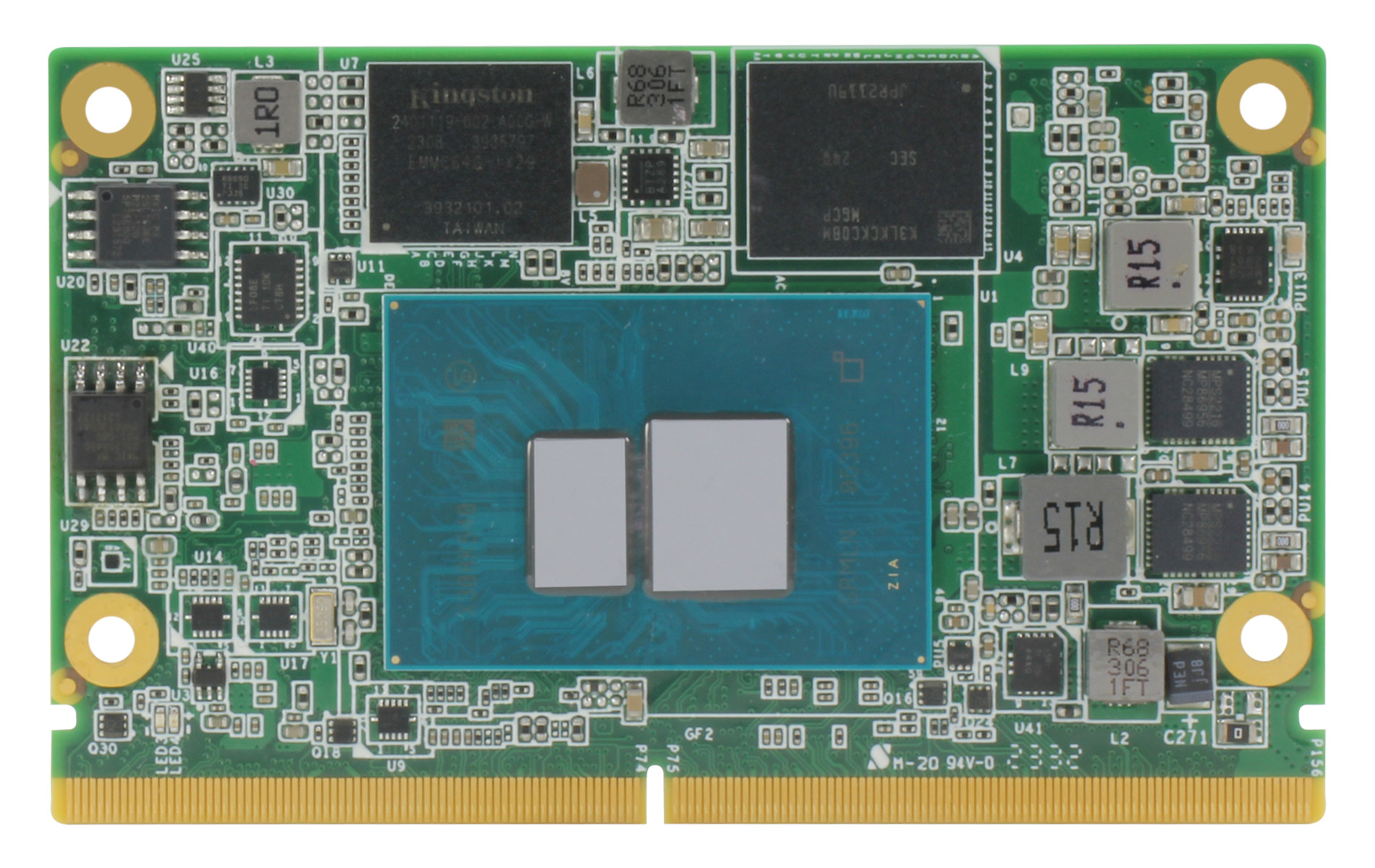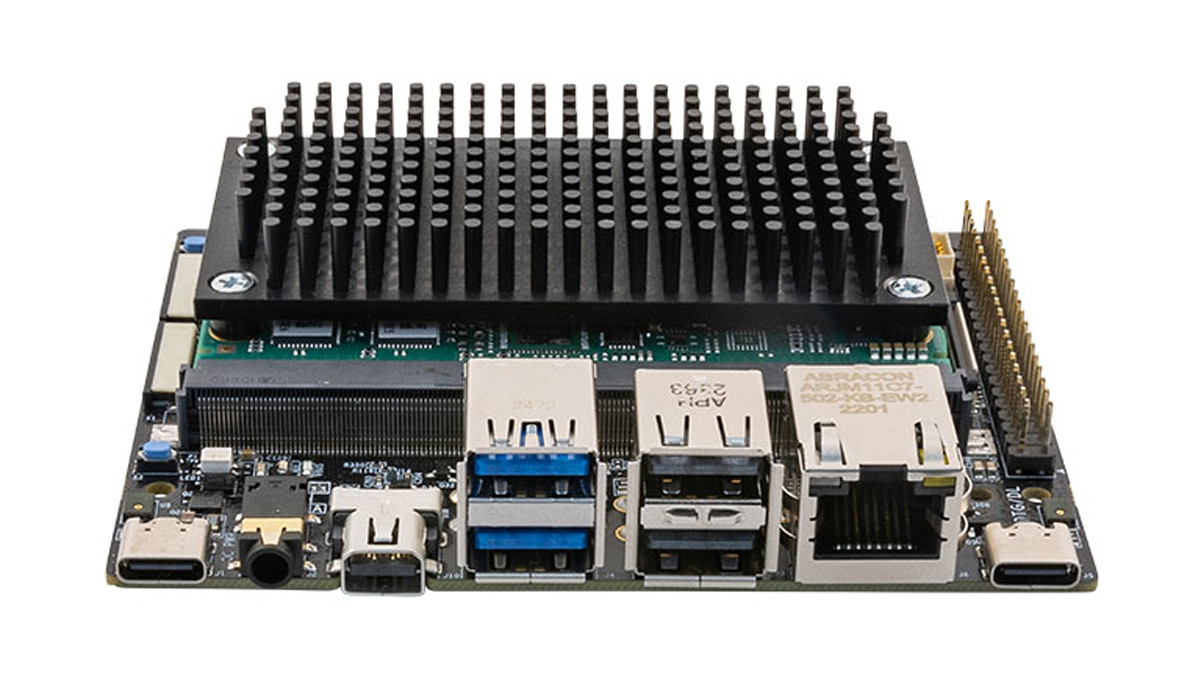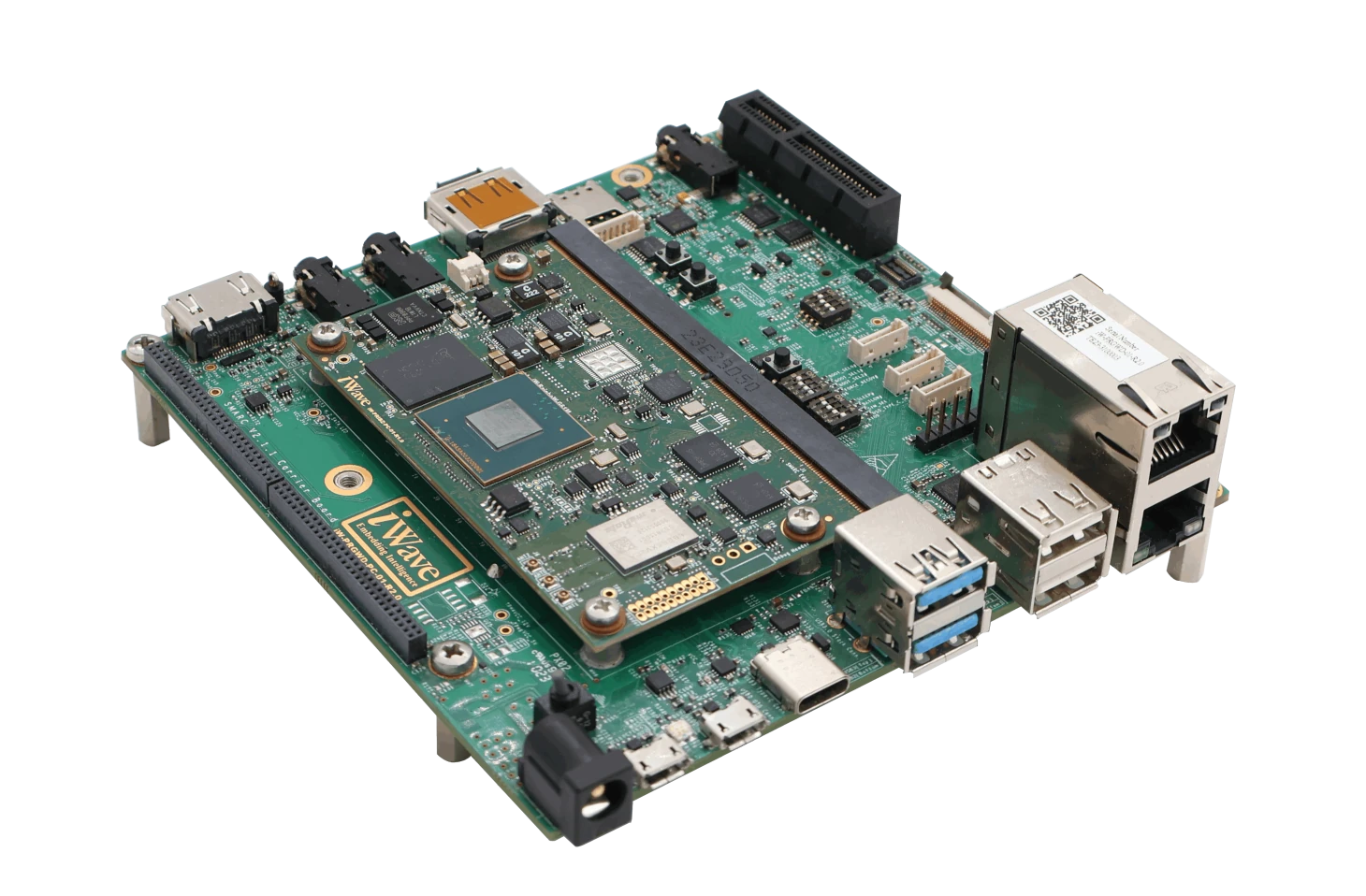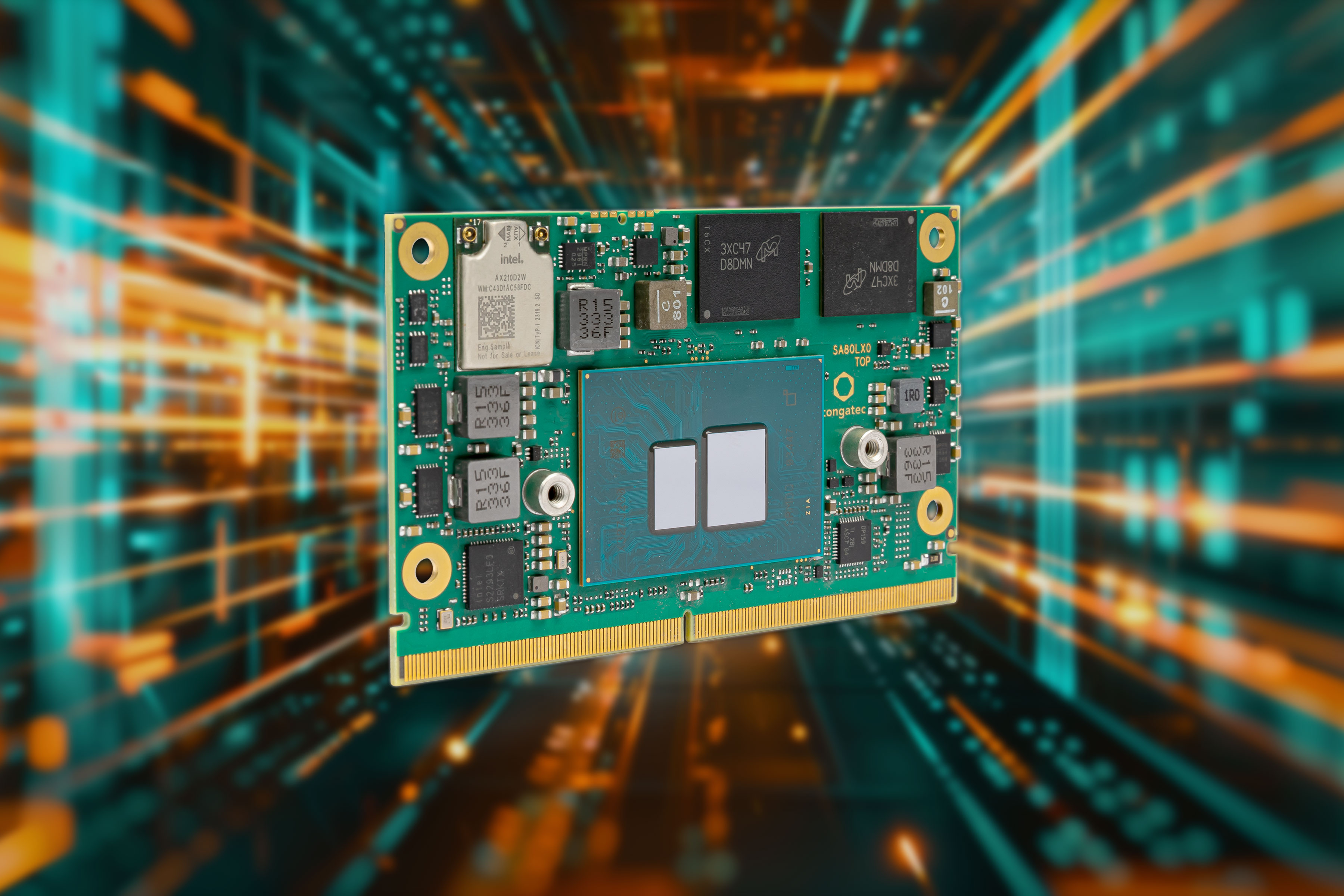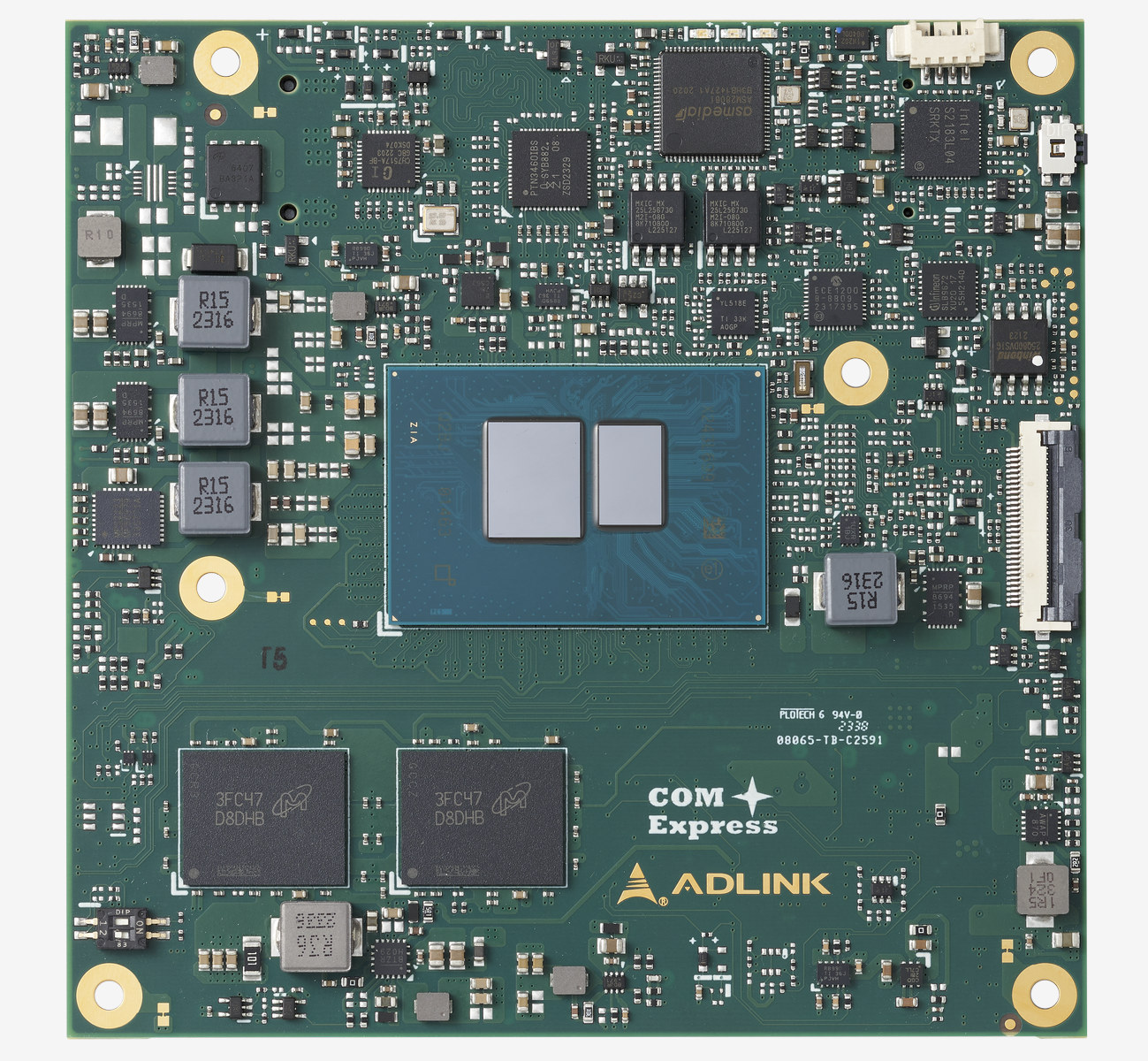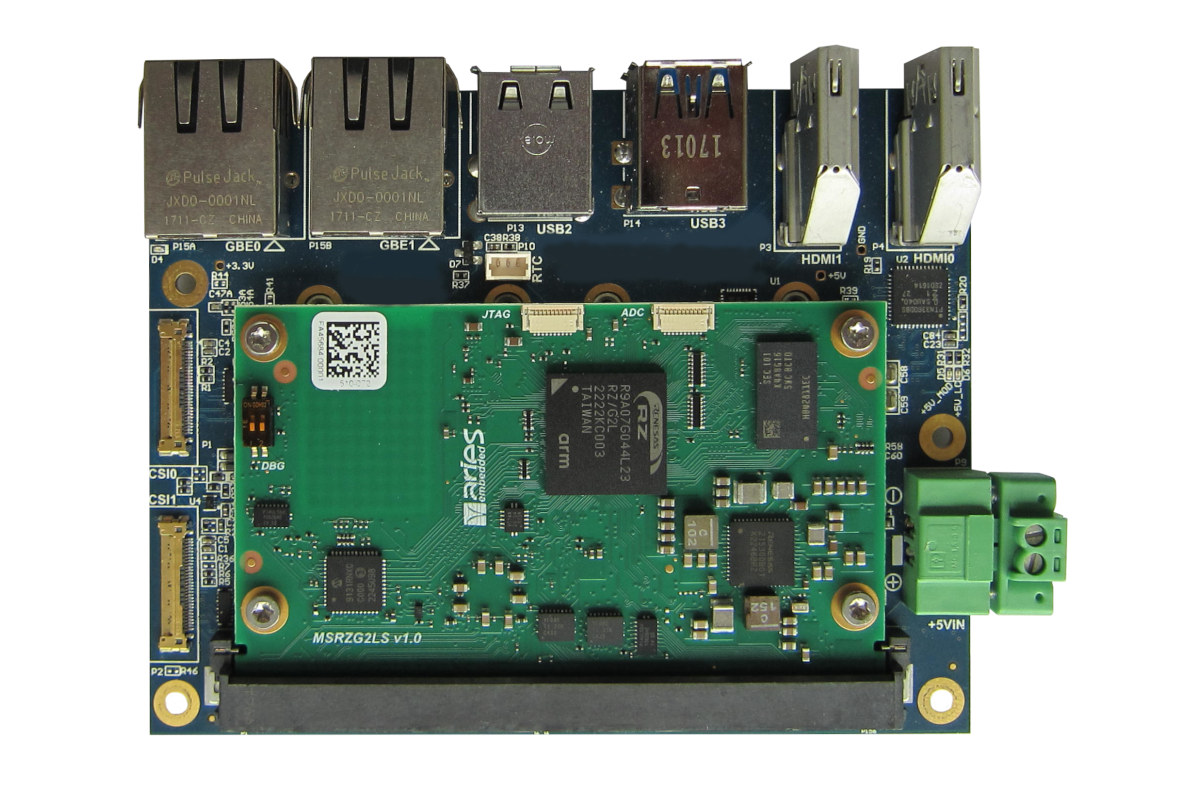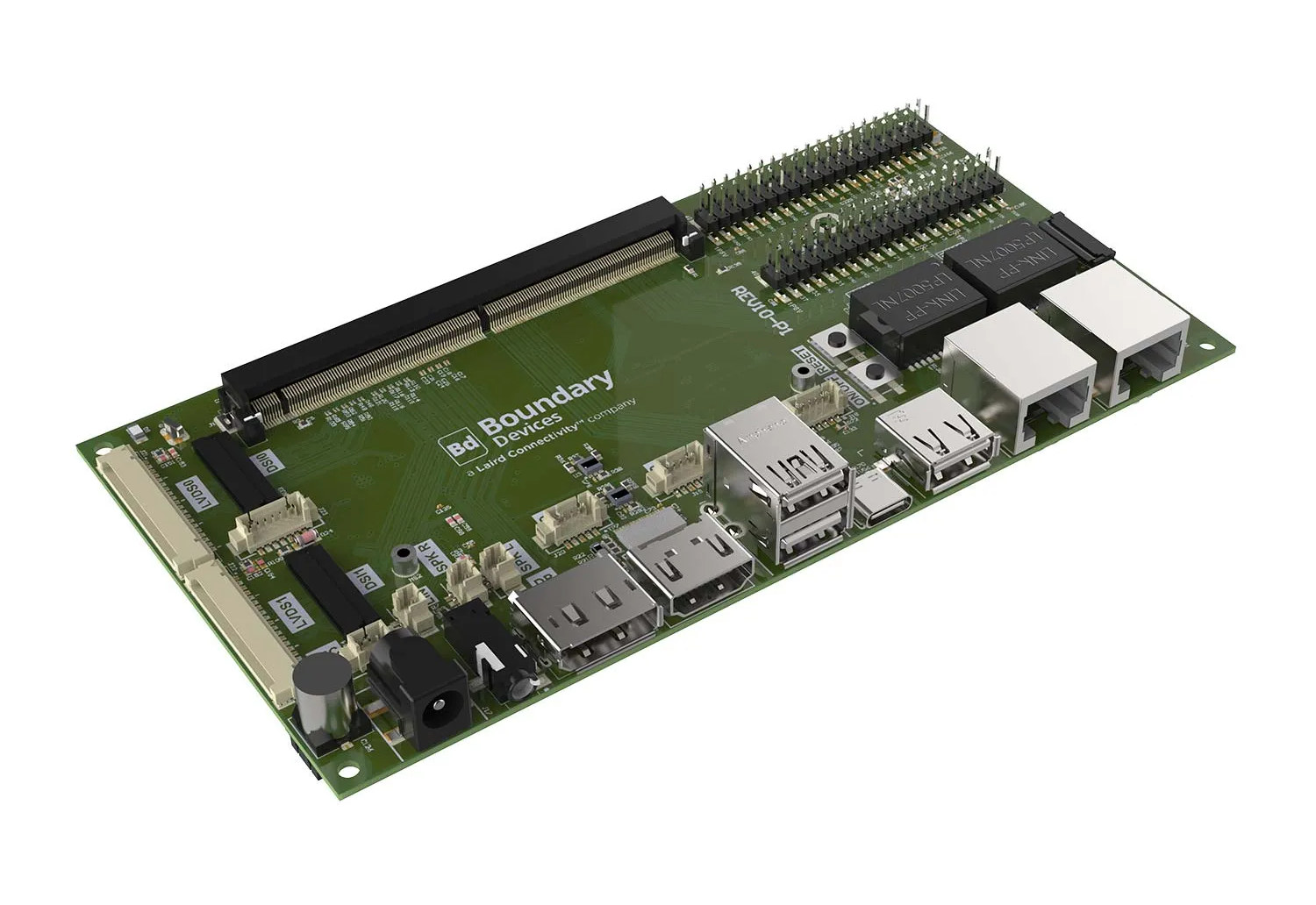AAEON uCOM-ADN is a SMARC-compliant system-on-module (SoM) based on an Intel Core i3-N305, Intel Atom x7425E, or Intel Processor N97 Alder Lake-N SoC and mainly designed for the digital signage and smart kiosk markets. The module is equipped with up to 8GB LPDDR5, up to 64GB eMMC flash, two 2.5GbE controllers, and offers a range of interfaces through a standard 314-pin MXM 3.0 connector such as SATA III, three PCIe Gen3 x1, DP++ and eDP video outputs, MIPI CSI camera input, and more. uCOM-ADN SMARC module specifications: Alder Lake N-series SoC (one or the other) Intel Atom x7425E quad-core processor up to 3.4 GHz with 6MB cache, 24EU Intel UHD Graphics @ 1.00 GHz; TDP: 12W Intel Processor N97 quad-core processor up to 3.6 GHz with 6MB cache, 24EU Intel UHD Graphics @ 1.20 GHz; TDP: 12W Intel Core i3-N305 octa-core processor up to 3.8 GHz with 6MB cache, 32EU […]
Avnet AI Vision Development Kit features Qualcomm QCS6490 SoC, dual camera, GbE, and USB-C PD
Just last month at Embedded World 2024, Qualcomm announced its RB3 Gen 2 Platform based on the QCS6490 processor with Cortex-A78 and A55 processing cores and 12 TOPS of AI power. Building on this, Avnet has recently launched the Avnet AI Vision Development Kit, also based on the QCS6490 SoC. The kit includes a dual camera setup, Gigabit Ethernet connectivity, USB-C Power Delivery, and a host of other features for applications like inventory and asset monitoring, drone/UAV/other mobile vision-AI edge compute applications, and multi-camera security systems with recognition. Previously we have written about similar AI dev kits including Allwinner V853 100ASK-V853-Pro, Sipeed Maix-III devkit, RZBoard V2L, and many other AI vision development boards feel free to check those out if you are interested in the topic. Avnet AI Vision Development Kit specifications SM2S-QCS6490 SMARC Compute Module: CPU – 4x Arm Cortex-A78 (up to 2.7 GHz), 4x Arm Cortex-A55 (up to […]
NXP i.MX 95 SMARC 2.1 system-on-modules – ADLINK LEC-IMX95 and iWave iW-RainboW-G61M
Several companies have unveiled SMARC 2.1 compliant system-on-modules powered by the NXP i.MX 95 AI SoC, and today we’ll look at the ADLINK LEC-IMX95 and iWave Systems iW-RainboW-G61M and related development/evaluation kits. The NXP i.MX 95 SoC was first unveiled at CES 2023 with up to six Cortex-A55 application cores, a Cortex-M33 real-time core, and a low-power Cortex-M7 core, as well as an eIQ Neutron NPU for machine learning applications. Since then a few companies have unveiled evaluation kits and system-on-modules such as the Toradex Titan evaluation kit or the Variscite DART-MX95 SoM, but none of those were compliant with a SoM standard, but at least two SMARC 2.1 system-on-modules equipped with the NXP i.MX 95 processor have been introduced. ADLINK LEC-IMX95 Specifications: SoC – NXP i.MX 95 CPU Up to 6x Arm Cortex-A55 application cores clocked at 2.0 GHz with 32K I-cache and D-cache, 64KB L2 cache, and 512KB […]
congatec conga-SA8 Amston Lake SMARC modules are targeted at industrial edge applications
Congatec’s new conga-SA8 SMARC modules are powered by the Intel Atom x7000RE “Amston Lake” processors. With twice the processing cores and similar power consumption to the previous generation, congatec’s new credit-card-sized modules are “intended for future-facing industrial edge computing and powerful virtualization.” An Intel Core i3‑N305 Alder Lake-N processor is also offered as an alternative to the Intel Atom x7000RE series for high-performance IoT edge applications. The conga-SA8 modules support up to 16GB LPDDR5 onboard memory, 256GB eMMC 5.1 onboard flash memory, and offer several high-bandwidth interfaces such as USB 3.2 Gen 2, PCIe Gen 3, and SATA Gen 3. The integrated Intel UHD Gen 12 graphics processing unit has up to 32 execution units and can power three independent 4K displays. The conga-SA8 is described as virtualization-ready and has a hypervisor (virtual machine monitor) integrated into the firmware. The RTS hypervisor takes complete advantage of the eight processing cores […]
ADLINK unveils Intel Atom x7000RE & x7000C Amston Lake COM Express and SMARC 2.1 modules
ADLINK has released two Intel Atom X7000RE & x7000C Amston Lake-powered modules with the cExpress-ASL COM Express Type 6 Compact module and the LEC-ASL SMARC 2.1 system-on-module both offered with up to 16GB LPDDR5 soldered-down memory and 2.5GbE networking. The modules are designed for high-performance, low-power, and ruggedized edge solutions running 24/7, and with support for Intel TCC and Time Sensitive Networking (TSN), the modules are also suitable for hard-real-time computing workloads required by use cases such as industrial automation, AI robots, smart retail, transportation, network communication, and more. Intel Atom x7000RE and x7000C Amston Lake processors The announcement came as a surprise because I had never heard about Intel Amston Lake processors so far. It might be because they were just announced and all seven SKUs are embedded parts with two to eight cores, and as a result, they may not quite get as much coverage as consumer processors. […]
SECO Modular Vision HMI displays support Arm and x86 SMARC 2.1 modules
SECO has unveiled a new HMI family of smart displays called the “Modular Vision” with NXP i.MX 93 (Arm), NXP i.MX 8M (Arm), or Intel Elkhart Lake (x86) powered SMARC 2.1-compliant system-on-modules and a display size ranging from 7-inch up to 15.6-inch. The goal is to offer a flexible platform to customers who can select various display sizes (7-inch, 10.1-inch, or 15.6-inch currently) and a SMARC module that closely matches the product’s requirements for example for a standalone panel PC. SECO Modular Vision key features and specifications: SoC 7-inch model – NXP i.MX93 single or dual-core Arm Cortex-A55 @ 1.7 GHz, Arm Cortex-M33 @ 250MHz, Arm Ethos U-65 microNPU 10.1-inch model – NXP i.MX 8M Plus dual or quad-core Arm Cortex-A53 @ 1.8 GHz, Arm Cortex-M7 @ 800MHz, optional GPU/VPU/2.3 TOPS NPU 15.6-inch model – Intel Atom x6000E, Pentium, and Celeron N and J Series “Elkhart Lake” CPUs with Intel […]
Renesas RZ/G2L and RZ/V2L SMARC 2.1 system-on-modules target HMI and Edge AI applications
ARIES Embedded has recently launched two SMARC-compliant MRZG2LS and MRZV2LS system-on-modules (SoM) powered by respectively a Renesas RZ/G2L dual-core Cortex-A55/M33 microprocessor with Arm Mali-G31 GPU and H.264 video codec (H.264) and a similar Renesas RZ/V2L MPU adding a built-in ‘DRP-AI’ AI accelerator for vision applications. Those are the first SMARC modules from the company and they are well-suited for applications such as entry-class industrial human machine interfaces (HMIs), embedded vision, edge artificial intelligence (edge-AI), real-time control, industrial Ethernet connectivity, and embedded devices with video capabilities. ARIES Embedded MRZG2LS and MRZV2LS key features and specifications: SoC – Renesas RZ/G2L or GZ-V2L with Application CPU – Single or dual Arm Cortex-A55 up to 1.2GHz Real-time core -Arm Cortex-M33 GPU – Arm Mali-G31 VPU – H.264 codec AI accelerator – DRP-AI on Renesas RZ/V2l only (MRZV2L SoM) System Memory – 512MB to 4GB DDR4 RAM Storage – SPI NOR flash, 4GB to 64GB […]
Tungsten700 SMARC SoM and devkit features MediaTek Genio 700 AIoT processor
Laird Connectivity Tungsten700 SOM is a SMARC system-on-module powered by a MediaTek Genio 700 Arm Cortex-A78/A55 AIoT processor with up to 8GB LPDDR4, 16GB eMMC flash, and a Sona MT320 Wi-Fi 6/Bluetooth 5.3 module based on the Filogic 320 chipset. The board was designed by Boundary Devices, recently acquired by Laird, and is offered with a SMARC 2.1 carrier board that can be used for development or as a single board computer integrated into designs. Tungsten700 SMARC module Tungsten700 specifications: SoC – MediaTek Genio 700 (MT8390) CPU – Octa-core processor with 2x Arm Cortex-A78 cores @ up to 2.2 GHz, 6x Arm Cortex-A55 cores @ up to 2.0 GHz GPU – ARM Mali-G57 MC3 GPU VPU as in “Video Processing Unit” Encode up to 4Kp30 HEVC/H.264 Decode up to 4Kp75 HEVC/H.264/AV1/VP9 VPU as in “Vision Processing Unit” – Tensilica VP6 Vision Processing Unit ISP Single Camera: 32MP @ 30FPS Dual […]


